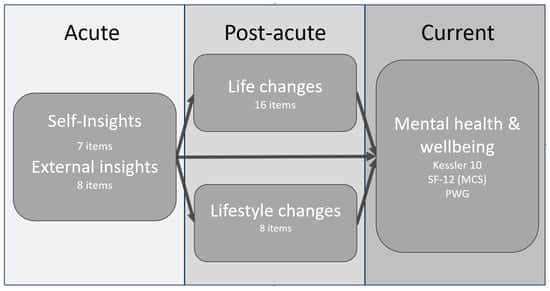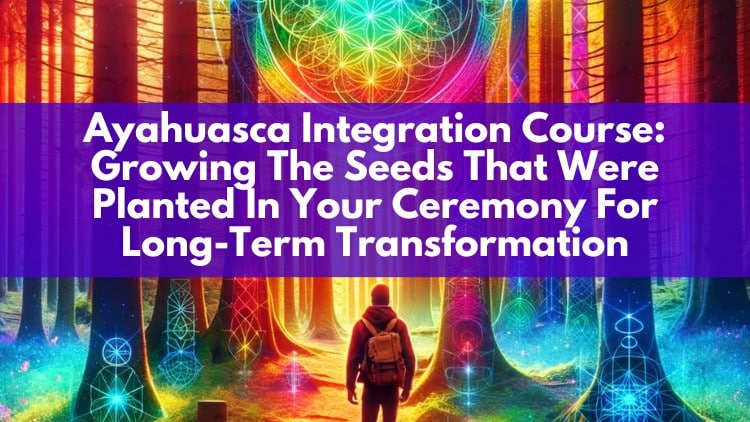Sure, I’d be happy to help! Here’s an introduction for your blog on Ayahuasca Experience:
Embarking on a post ayahuasca integration journey is an essential part of the ayahuasca experience. This phase is where the real work begins, as you process, reflect, and integrate the insights gained during your retreat. Join us as we delve into the transformative process of integration after an Ayahuasca ceremony.
Navigating the Post-Ayahuasca Integration Process: A Guide for Healing and Growth
Navigating the Post-Ayahuasca Integration Process: A Guide for Healing and Growth in the context of Ayahuasca Retreat and Healing. Place HTML tags around the most important phrases in the text.
This Plant Medicine Will CHANGE Your Life!
3 TIPS to go DEEPER during Ayahuasca Ceremonies.
What changes after ayahuasca?
After an Ayahuasca experience, many people report profound changes in their perspectives, emotions, and behaviors. They may feel a deep sense of emotional healing and release from past traumas or negative thought patterns. The plant medicine often brings about an increased sense of connection to nature, self, and others, leading to greater empathy and compassion. Some individuals also report clarity of purpose and direction in their lives, as well as a heightened awareness of their own inner struggles and strengths. Overall, the changes after Ayahuasca can manifest as a greater sense of peace, fulfillment, and spiritual growth.
What should I eat after an ayahuasca ceremony?
After an ayahuasca ceremony, it’s important to be mindful of what you eat to support the integration and healing process. It’s recommended to consume light and easily digestible foods. Some options include fruits, vegetables, lean protein such as fish or tofu, and whole grains. Avoid heavy, greasy, and processed foods, as they can weigh you down both physically and energetically. Hydrating with water and herbal teas is also important to help flush out toxins and support the body’s natural detoxification process. Additionally, some retreat centers may have specific dietary guidelines to follow post-ceremony, so it’s advisable to adhere to their recommendations for the best results.
How do you incorporate plant medicine into your life?
Incorporating plant medicine into your life, specifically through an Ayahuasca retreat and healing experience, is a deeply personal and transformative journey. It typically begins with a strong intention and commitment to the healing process. During the retreat, participants consume the Ayahuasca brew, often guided by experienced shamans or facilitators, in a safe and supportive environment. The ceremony itself is a profound and often intense experience, allowing individuals to connect with their inner selves, confront unresolved emotions, and gain insight into their lives.
After the retreat, integrating the lessons learned from the Ayahuasca experience becomes crucial. This often involves reflection, meditation, and the development of new lifestyle practices. Many people find that the insights gained from the Ayahuasca retreat inspire them to make positive changes in their lives, whether it’s adopting healthier habits, improving relationships, or pursuing a deeper spiritual connection. Additionally, ongoing support through integration circles, therapy, and community can be invaluable in maintaining and nurturing the healing process.
Ultimately, incorporating plant medicine, specifically Ayahuasca, into your life requires a deep sense of respect for the medicine and its teachings. It’s about honoring the experience, remaining open to the ongoing growth and healing it facilitates, and approaching life with a greater sense of compassion and awareness.
How does ayahuasca impact the brain?
Ayahuasca has been found to have a profound impact on the brain. The main active ingredient in ayahuasca, DMT (dimethyltryptamine), is a powerful psychedelic compound that can lead to significant changes in brain activity. Research suggests that ayahuasca can modulate the default mode network in the brain, leading to a reduction in the activity of the ego-related regions and an increase in connectivity between brain regions that are not typically synchronized.
Additionally, ayahuasca has been shown to promote neuroplasticity, which refers to the brain’s ability to reorganize itself and form new connections. This can potentially lead to improved cognition, emotional processing, and overall psychological well-being.
Furthermore, studies have indicated that ayahuasca may have anti-inflammatory and neuroprotective effects on the brain, which could be beneficial for conditions related to inflammation and oxidative stress.
It’s important to note that while these findings are promising, more research is needed to fully understand how ayahuasca impacts the brain and to explore its potential therapeutic applications.
Frequent Questions
How can I best integrate my ayahuasca experience into my daily life after returning from a retreat at Ayahuasca Retreat and Healing?
The best way to integrate your ayahuasca experience into your daily life after returning from a retreat at Ayahuasca Retreat and Healing is to practice mindfulness, reflect on your insights, maintain a healthy lifestyle, and seek ongoing support from therapists or integration circles.
What are some common challenges or difficulties that people face during the post-ayahuasca integration process, and how can I navigate through them effectively?
Some common challenges during the post-ayahuasca integration process include emotional turbulence, spiritual confusion, and difficulty reconnecting with everyday life. To navigate through these effectively, it’s important to seek support from experienced facilitators or therapists, practice self-care and grounding techniques, and integrate the insights gained from the ceremony into daily routines.
Are there any specific practices or rituals recommended by Ayahuasca Retreat and Healing to support the integration of insights and healing from the ayahuasca ceremony into everyday life?
Yes, Ayahuasca Retreat and Healing typically recommends meditation, mindful self-reflection, journaling, and participation in group sharing circles as specific practices to support the integration of insights and healing from the ayahuasca ceremony into everyday life.
In conclusion, post-ayahuasca integration is a crucial part of the healing process that should not be overlooked. It provides an opportunity to reflect, integrate insights, and make sustainable changes in our lives. By approaching this phase with patience, compassion, and ongoing support, individuals can fully embrace the transformation experienced during their Ayahuasca retreat and continue on their journey towards healing and personal growth.






